Energy-Efficient Home Appliances: Furnaces, Boilers and Air Conditioners
The first step to building an energy-efficient home is using green building techniques to form an ultra-tight building envelope. The next step is...
4 min read
Meadowlark Design+Build : Jan 26, 2022
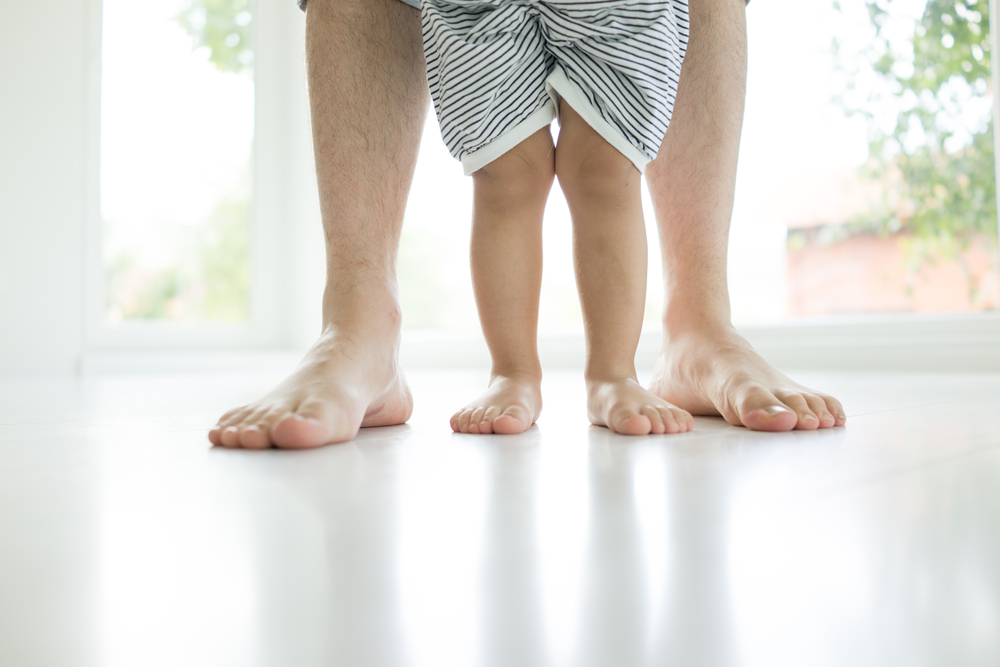
When winter hits and chilly temperatures roll in, you need a heating system that’s effective and reliable in keeping your home comfortable. And while traditional furnaces and heating systems will continue to do the job, you do have other green building technology options that can arguably do it better — one of them being radiant floor heating.
Let’s take a look at radiant floor heating and the benefits it can bring to your home.
Radiant energy is how human beings experience heat. Think of the warm sun on a spring day, and imagine how that heat feels on you. While it’s not quite as intense of a heat source, radiant floor heating provides a similar experience.
Simply put, radiant floor heating is a heating system that is installed beneath the surface of your floor. It uses one of three methods to heat your floors and the space above them: air heating, electric heating, or hot water (hydronic) heating. Each of these methods, depending on the application, has proven to be an ultra-effective and efficient heating system that can consistently keep your home (or parts of your home), warm and cozy.
Radiant floors require less energy to heat a home simply because homes with radiant heat feel warmer. With a radiant floor, 65 degrees feels as comfortable as an air temperature of 70 degrees — and that incremental difference is more significant than you might think.
Radiant floor heating provides many benefits when compared to its traditional heating system counterparts, but we’ll explore a few of the most common ones below. By installing a radiant floor heating system, your home will experience:
Heat Where You Feel it: Radiant floor heating systems are amazing heat-retainers. While traditional heating systems lose energy through the home's ductwork, radiant floors keep heat close to the source in the floor where people are located. Radiant floors are also usually kept running at a lower temperature (around 85 degrees Fahrenheit) than traditional systems (150-175 degrees Fahrenheit).
More Efficient Heat Transfer: For water-based systems — water has a heat capacity roughly 3500 times greater than air. This means that water can transport heat much more efficiently than air and thus will be significantly more energy efficient. In addition, you can put thermostats in individual rooms and control the amount of heat needed therein.
Better Heat Retention: In addition, if the heating coils/tubes are installed in a floor with lots of thermal mass — like concrete or tile, once you heat the floor it can hold the temperature for a much longer time without adding additional heat. Think of a material with a high thermal mass as similar to a sponge — it can soak up the energy and then hold it for a long period of time.
While traditional HVAC systems use vents and ducts to push warm air into a room, there are often cold spots that are missed. The areas far away from the vents will always be significantly colder than those near them.
However, with radiant floor heating, this isn’t the case. The heating elements are designed to cover the entire floor uniformly, and since heat rises, the elements effortlessly and evenly warm the entirety of a room. If the room is properly air sealed and insulated, your room is sure to feel much warmer — sometimes even if the overall temperature is lower.
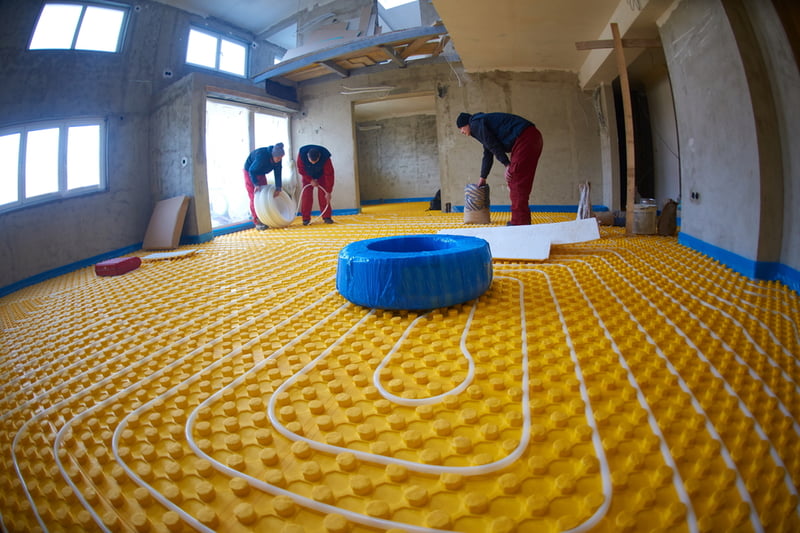
Radiant floor heating also requires no ductwork and thus there is no blower motor noise that you usually get with forced air furnace systems.
With radiant floor heating, all the system’s components are located underneath your floor and no vents are needed. Besides a programmable thermostat, your rooms and walls will be equipment-free. This opens up wall or flooring space that was previously used for HVAC vents, ducts, and even wall-mounted radiators. Without all of those components, you’re left with a lot more space for designing freedom. You can finally create the beautifully furnished and decorated home you’ve always dreamed of with no worries of blocking heating vents or radiators.
And speaking of design freedom — radiant floor heating is scalable. This means that if you renovating to include the primary bath suite that you've always dreamed of, you can add radiant floor heating in the new bathroom design. Or, if you are adding onto your home, radiant floor heating may be the perfect way to manage the additional heating needs without having to upgrade your existing home's HVAC system.
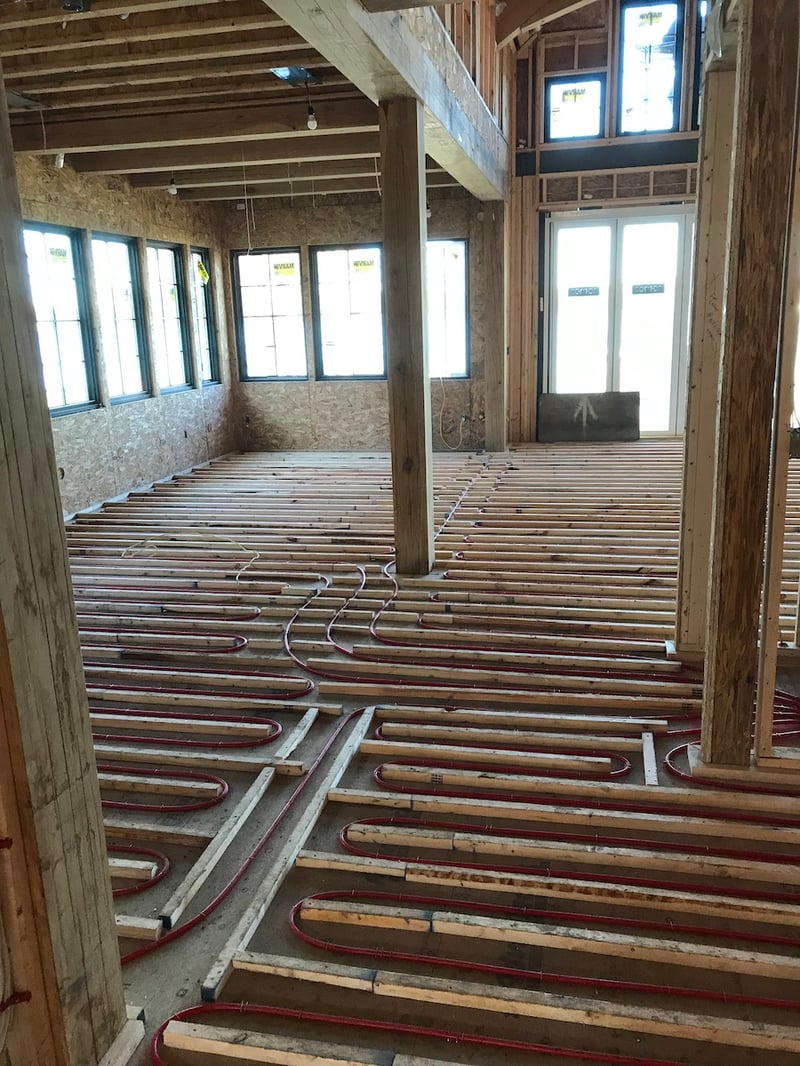
And if you are building new — radiant heating systems give you architectural freedom as you don't have to worry about designing around ducts, vents or wall heating components.
Speaking of design freedom, you’ll also be happy to know that radiant floor heating is compatible with almost every type of flooring. Whether you like the soft, cozy feel of carpet or you prefer the natural look of hardwood, you have endless options. It’s always helpful to run your ideas by an experienced contractor to make sure your radiant floor heating system can be designed to accommodate your ideal flooring and what makes the most sense for your unique application.
When traditional heating systems continuously blow warm air into a room, they do so in a cycle that recirculates air — as well as all the dust and allergens within it. By choosing radiant floor heating instead, you’re making a choice to improve the quality of the air you breathe every day. It’s a clean, hypoallergenic solution that minimizes the concern of bad air quality and directly improves the health of anyone inside. If you suffer from allergies, radiant floor heating is the perfect solution since no ductwork means removing the possibility of allergens being continually distributed through the home. Heated forced air also dries out the air in a home creating uncomfortably low humidity levels that also dry out the sinuses and the skin.
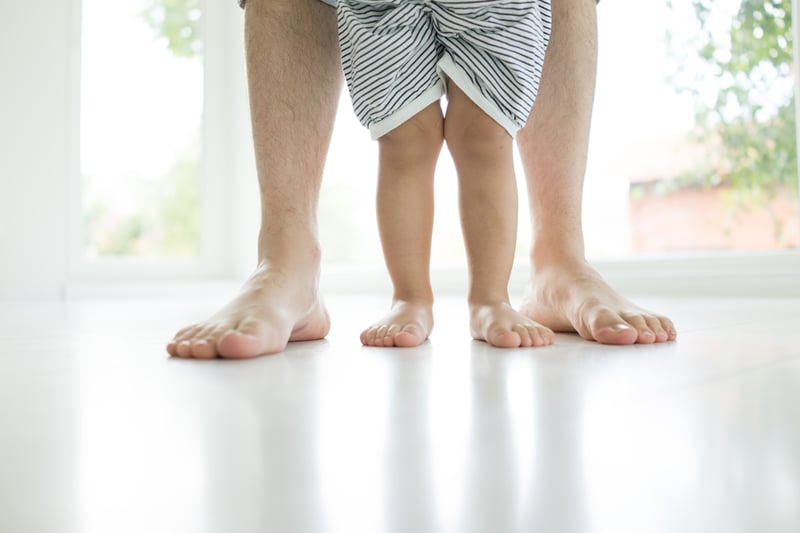
And last but certainly not least...imagine getting out of bed on a cold winter day and stepping onto a warm floor...it's pretty magical!
Radiant floor heating is a great green building technology for improving the comfort and energy efficiency of your home — and while it can cost a bit upfront to install, you’re likely to love your toasty floors so much that you never even think about going back to forced-air heating. If you’d like to retrofit a radiant floor into an old house, or install them in a new custom home, Meadowlark Design + Build can help! Contact us today to learn more.

The first step to building an energy-efficient home is using green building techniques to form an ultra-tight building envelope. The next step is...

Today, advanced green building technologies have allowed us to harness that consistent temperature and use it to heat or cool homes comfortably in a...
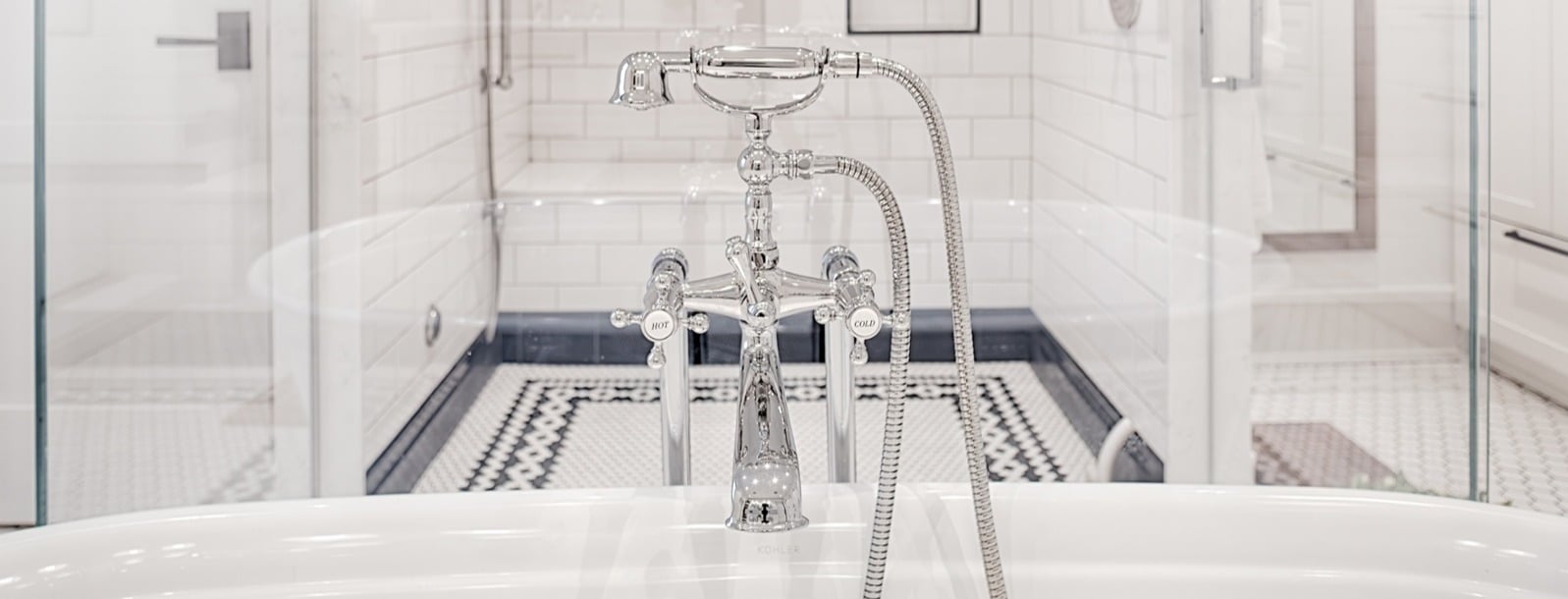
You need a water heating system that provides enough hot water for your family’s needs — but if you’re like many other eco-conscious homeowners, you...